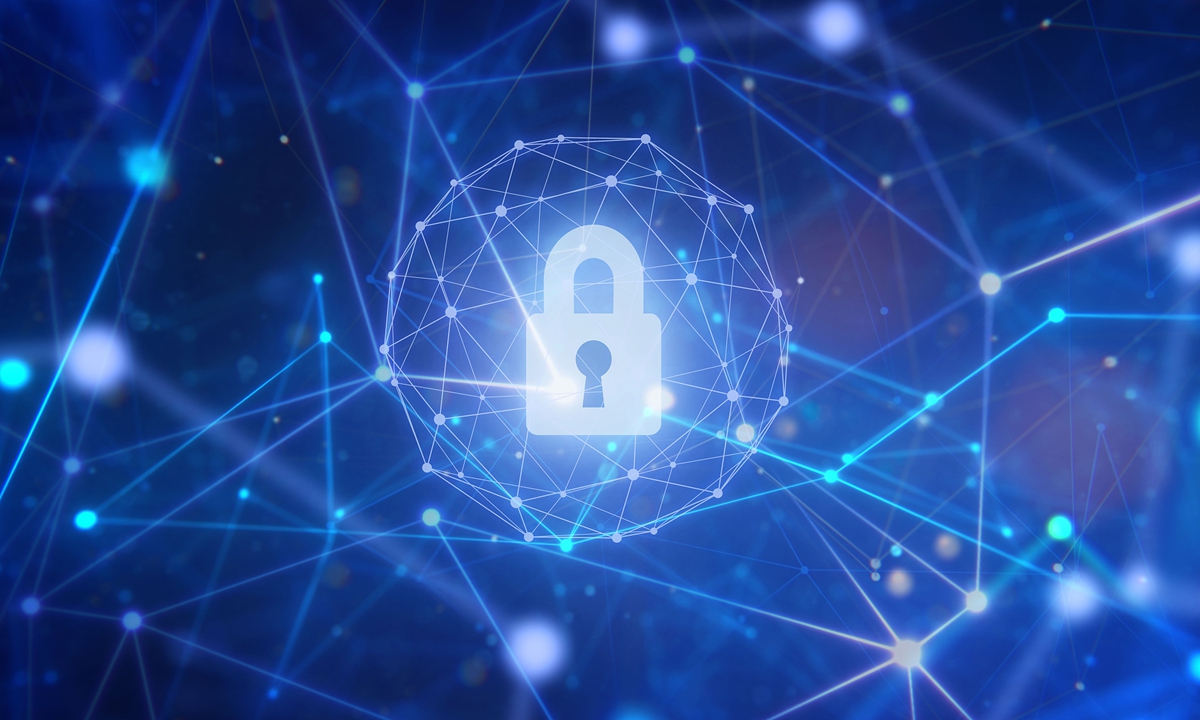China to accelerate integration of cybersecurity and AI to deal with risks: CPPCC member

Photo: VCG
China's cybersecurity technology ranks in the "top tier" globally, and in the realm of security and defense it can now stand on par with the US, Qi Xiangdong, chairman of Qi An Xin Technology Group, told the Global Times on Friday. However, there remains a gap between China and some developed countries such as the US in terms of investment in cybersecurity, Qi noted.
The rapid development of artificial intelligence (AI) brings new cybersecurity threats, and China should accelerate the integration of cybersecurity and AI technology to enhance its capability to deal with cybersecurity risks and uncertainties in cyberspace, Qi said.
Qi, who is also a member of the National Committee of the Chinese People's Political Consultative Conference (CPPCC), said during a group interview ahead of the opening of the two sessions this year that the development of AI technology has become a hot topic for discussion both domestically and internationally.
However, the security risks it brings have also raised concerns. Some experts estimate that over the next decade, the malicious use of AI technology will grow rapidly, posing serious threats to political security, cybersecurity and military security.
Regarding this hotly debated topic, Qi believes that there are three main types of new cybersecurity risks that would come along with AI technology.
First, AI itself exacerbates security threats, such as data breaches, fraudulent attacks, and security in social governance.
"Generative AI technologies represented by ChatGPT and Sora can quickly generate phishing emails and write malicious software and code, leading to an explosive growth in the number of attacks and frequent AI fraud incidents," he told the Global Times.
Moreover, criminals can use "deepfake" technology for face-swapping and voice manipulation, creating fake videos, so that "seeing may not necessarily mean believing" could become the norm.
The second type of security risk lies in the potential exacerbation of the "imbalance between offense and defense" in the field of cybersecurity, resulting in greater vulnerability to attacks, Qi noted.
AI significantly lowers the barrier to entry for cyberattacks, allowing ordinary individuals without coding or technical knowledge to become hackers, and thereby increasing the number of cyberattacks. Meanwhile, specialized hacker organizations can leverage AI tools to modify and upgrade their attacks.
The third type of risk is that AI exacerbates military threats, with the trend of AI weaponization becoming apparent, Qi said. He noted that AI can be used in lethal autonomous weapons like "killer robots," enabling autonomous identification of targets, remote automated operations, concealing the source of attacks, establishing advantages in confrontation, and connecting networks, decision-makers, and operators, making military actions more targeted, precise, and widespread.
In fact, an increasing number of countries are exploring the application of AI in the military domain.
Qi told the Global Times that the key source for AI is big data, so China must first of all solve data security issue to address the threat from AI, he said.
To tackle this challenge, a comprehensive approach is needed, involving not only "intelligence against intelligence" but also "coordinated development between humans and machines," Qi said.
Under the new circumstances, it is necessary to strengthen the promotion of technological innovation, encourage leading companies in various industries and cybersecurity companies to cooperate, integrate AI security technology into digital scenarios, and provide effective security protection, Qi noted.
At the same time, it is necessary to leverage AI capabilities to accelerate innovation in cybersecurity technology and security protection systems, in order to "run faster than AI technology," he said.
"Security is all about speed," Qi said, noting that effective security protection for new scenarios created by new technologies is essential for the continued promotion and application of technology; otherwise, technology applications will perish in their infancy.
AI can also be applied in the field of cybersecurity, Qi stressed. A security expert can handle 120,000 alerts in one year, and "our innovative Q-GPT security robot increases the efficiency of alert handling by 70 times compared to a human," Qi said.
This could help security experts save an average of 80 percent of their "screen-watching" time. It also allows them to use the time saved to engage in high-value tasks related to business and direct robots to handle more complex security incidents, Qi said.
Over the past year, international cyberspace competition has become more intense, with frequent cyberattacks. In response to this situation, China is strengthening the construction of its internal cybersecurity system, Qi said.
The cyber armies and intelligence agencies of some unfriendly countries will never cease their cyberattacks on China, just as we cannot rid the world of bacteria and viruses. Qi explained that the internal cybersecurity system is like the human immune system. "It can kill bacteria and viruses, or prevent these bacteria and viruses from affecting our health. That's its function," he said.
Although China's cybersecurity technology has reached the top tier globally, there is still a gap between the investment in cybersecurity by Chinese government departments and enterprises compared to that in the developed countries, Qi noted.
"The US 2024 fiscal year budget shows that the cybersecurity budget of civilian federal agencies accounts for approximately 16.4 percent of the IT budget, while in China, it's still around 3 percent, which is a huge gap that needs to be filled," Qi told the Global Times.
"Security is paramount, and insufficient investment will inevitably lead to insecurity," he said. According to the experience of developed countries, cybersecurity investment should account for more than 10 percent of the total IT investment to support digital business.



